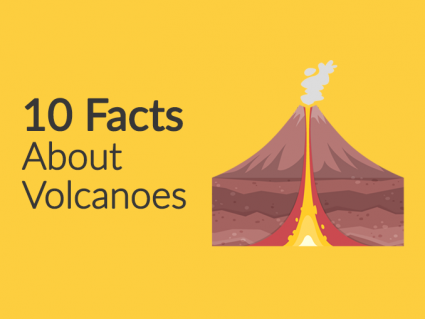7 Major Tectonic Plates: The World’s Largest Plate Tectonics
From large to small, the 7 major tectonic plates include the Pacific, North American, Eurasian, African, Antarctic, Indo-Australian and South American plate.

From large to small, the 7 major tectonic plates include the Pacific, North American, Eurasian, African, Antarctic, Indo-Australian and South American plate.

Ready to learn about volcanoes? From lightning that sparks at a volcano to its deadly hazards, we’re going to dive into 10 little-known facts about volcanoes

The 3 types of faults are: normal, reverse and strike-slip. When two blocks slide horizontally, it’s strike-slip. If it moves vertically, it’s dip-slip.

Conservative or transform plate boundaries slide across each other. They neither converge or diverge such as parts of the North American and Pacific Plate.

The Pacific Plate stretches all the way along the west coast of North America and reaches all the way to the east coast of the islands of Japan & Indonesia.

Convergent plate boundaries have some of the most violent catastrophes and geology on Earth. When plates smash together, it has created chains of volcanoes.

Beneath the oceans, lava erupts every day from mid-oceanic ridges. These divergent plate boundaries pull apart from each other creating new igneous rock.

The North American plate extends all the way over the North pole to Siberia. It also includes Greenland, Cuba, the Bahamas and part of the Atlantic Ocean.

If you went 200 million years back in time, Earth was 1 supercontinent. Now, it’s made up of 7 separate continents. This is the supercontinent cycle at work.

About 200 million years ago, all the continents were together as one giant supercontinent known as Pangaea. Over time, these continents have broken apart.

Plate tectonics are deceptively slow. It’s just centimeters each year. Continental drift is the idea that continents passively move due to tectonic activity

Antarctic plate holds the continent of Antarctica including the surrounding ocean. It shares borders with the African, Pacific & South American plate.

The African major plate contains all of Africa as well as the surrounding oceanic crust of the Atlantic Ocean. It moves at an average rate of 2.5 cm per year.

The Indo-Australian Plate combines the Australian & Indian Plate. Widely considered two separate plates, it includes Australia, India and the Indian Ocean.

The South American plate is the smallest of all major plates that includes the continent of South America and a large portion of the Atlantic Ocean.